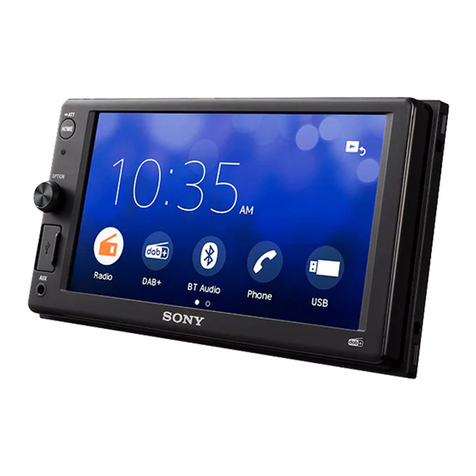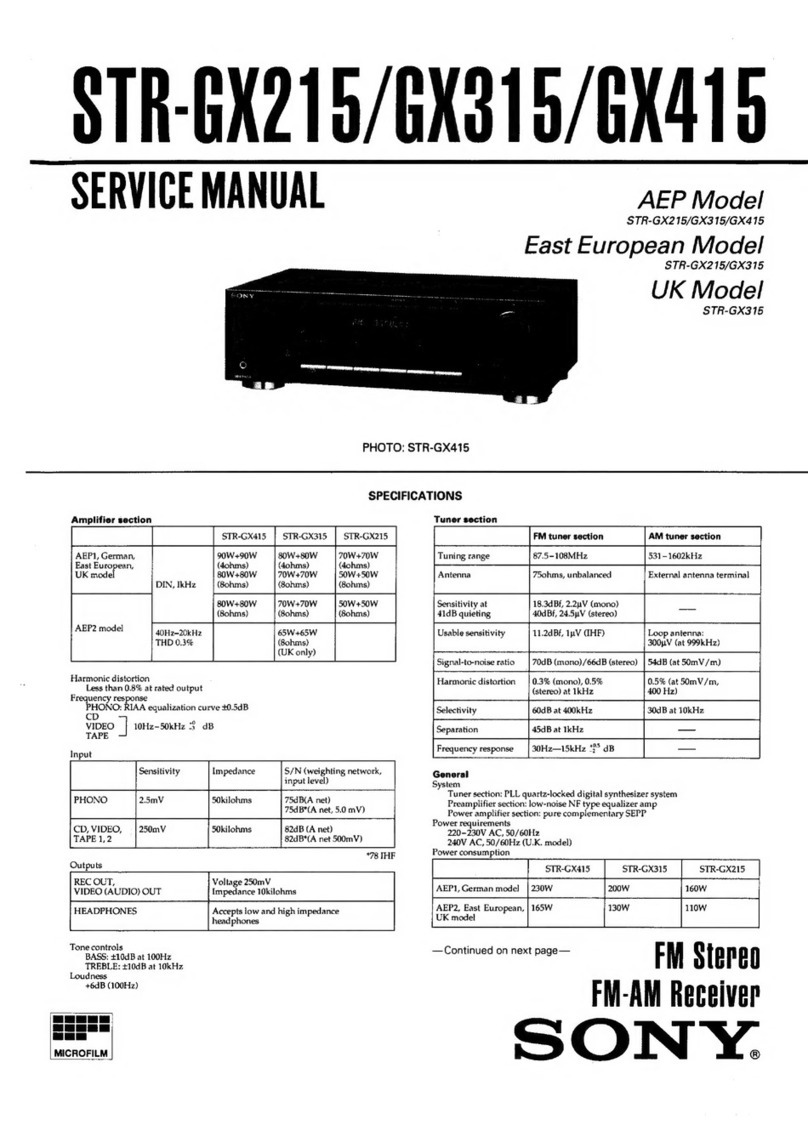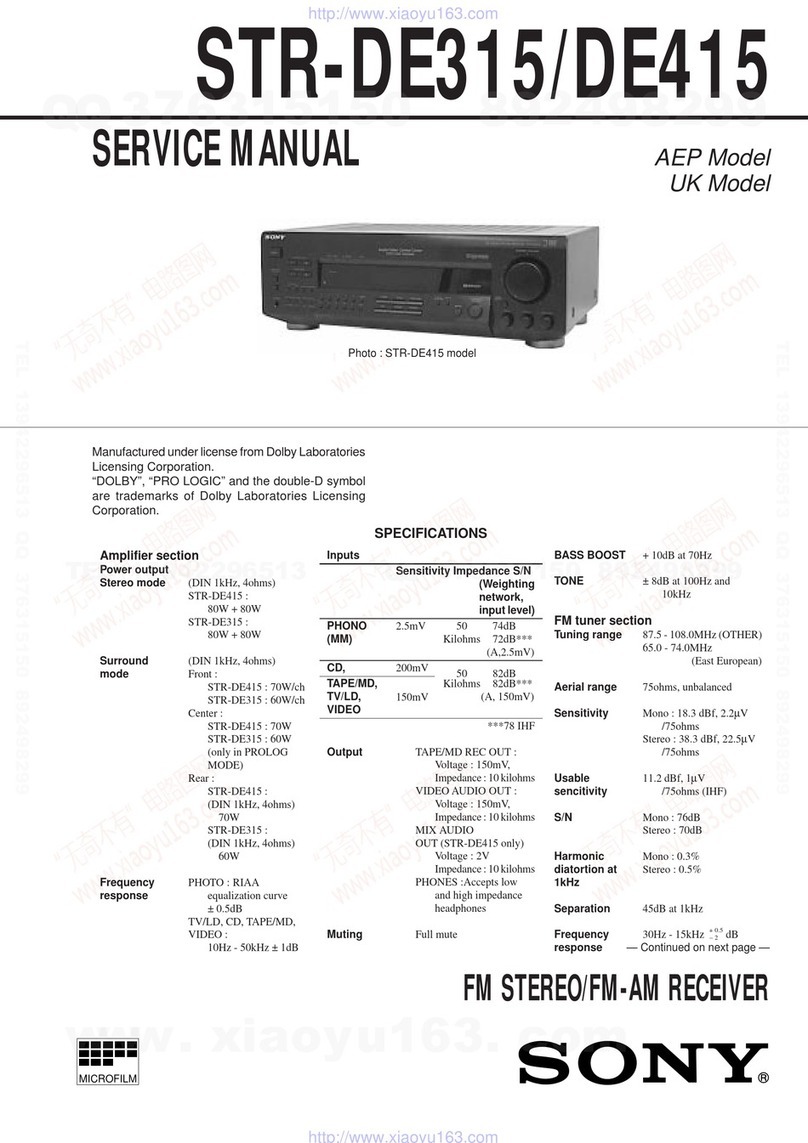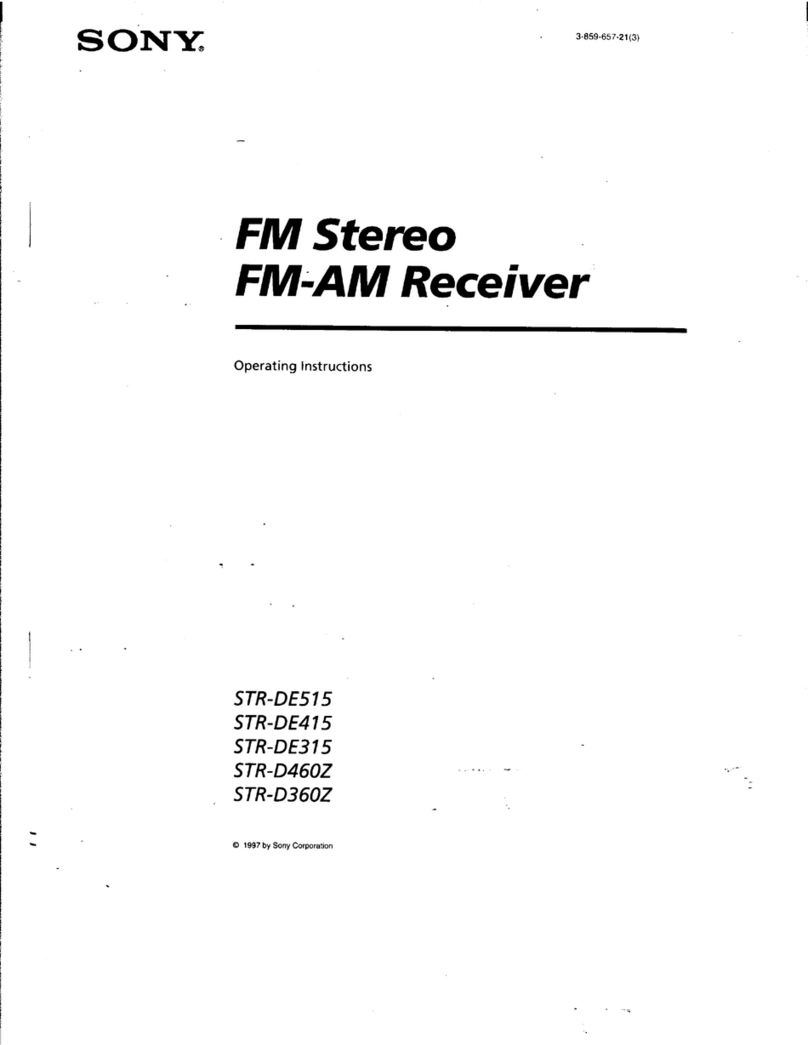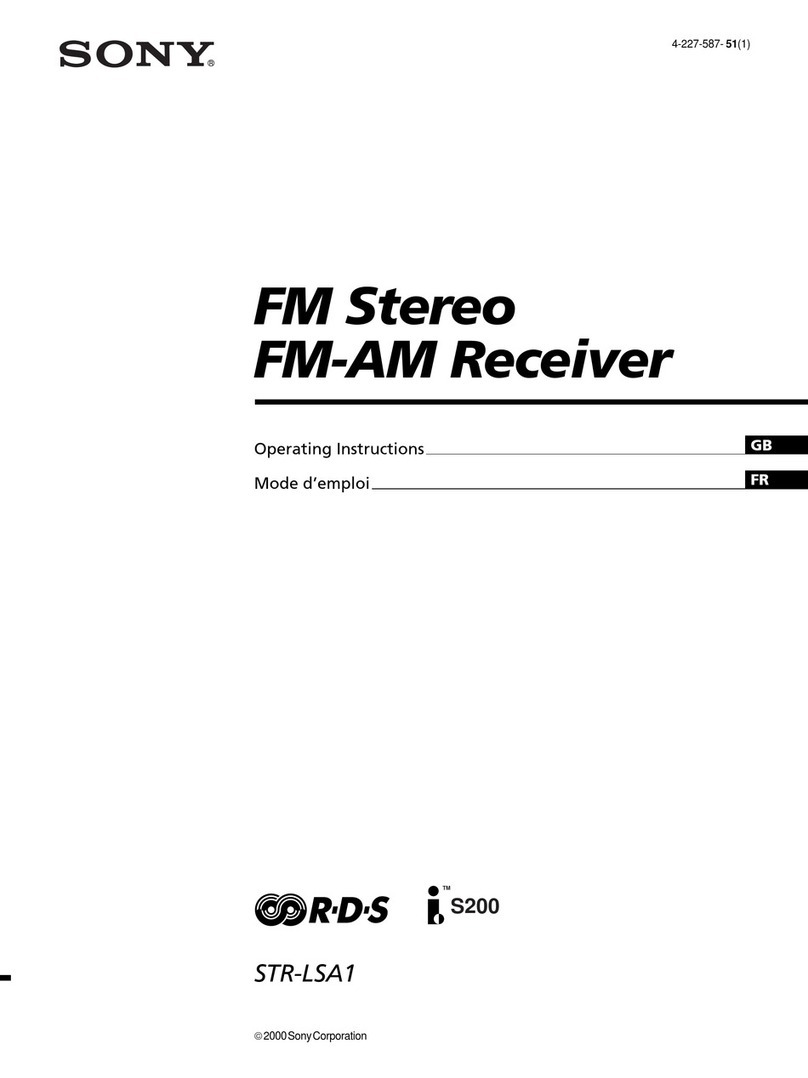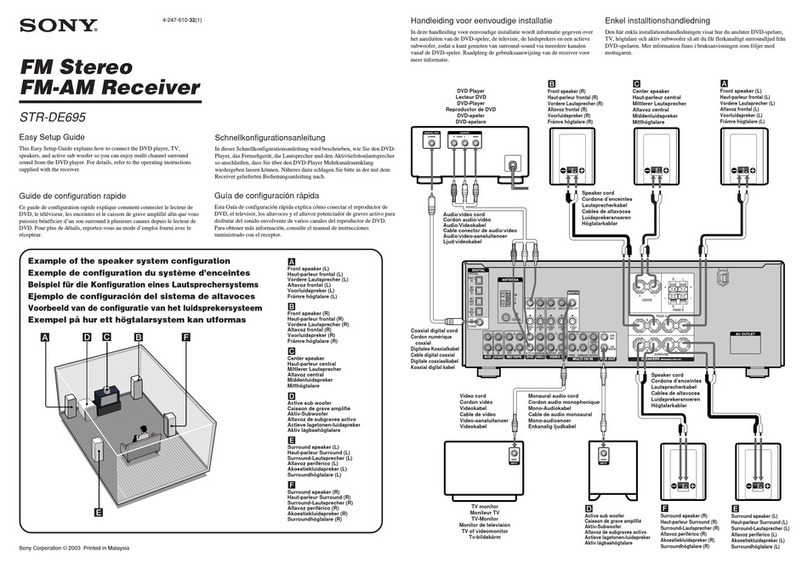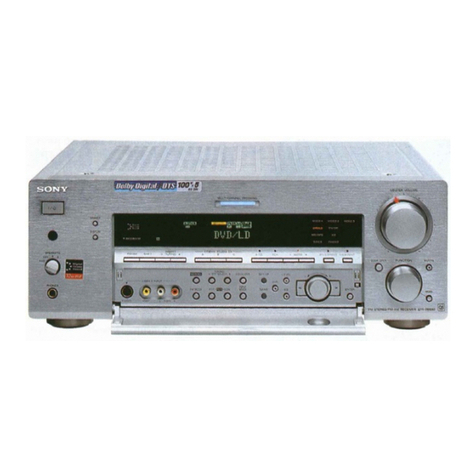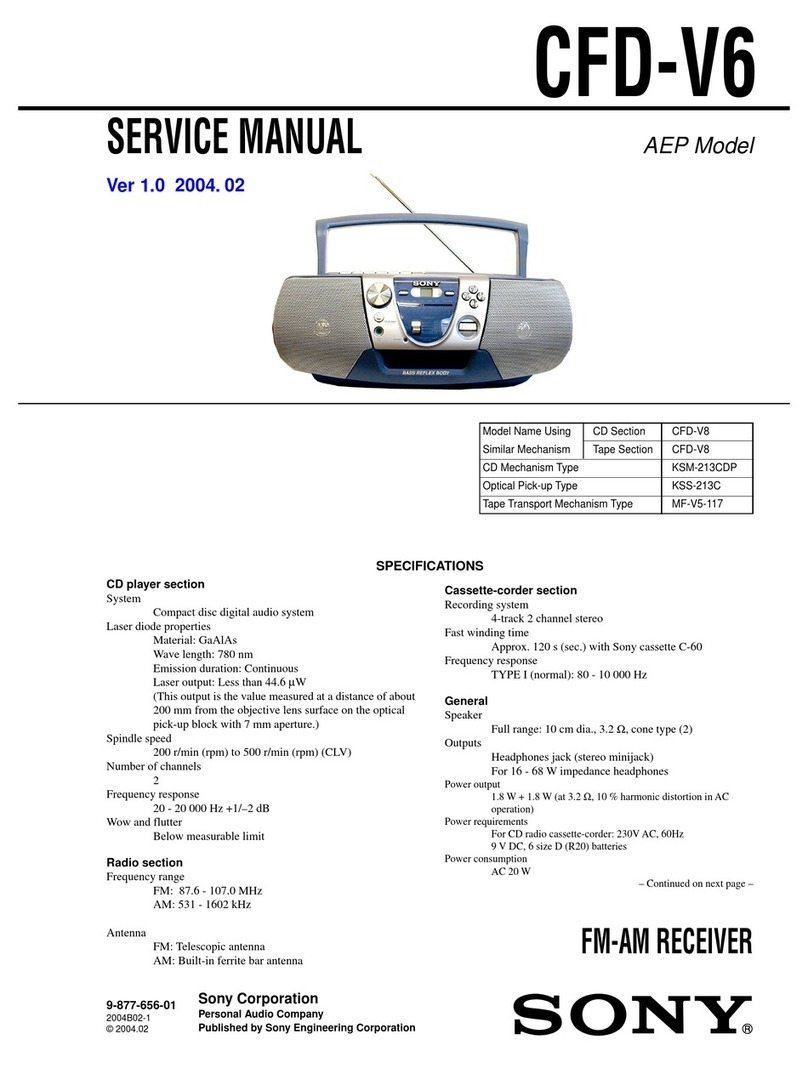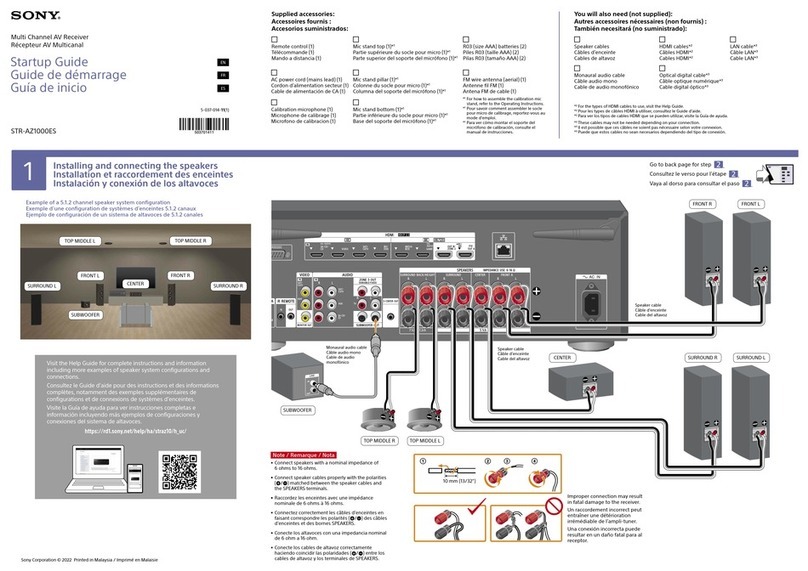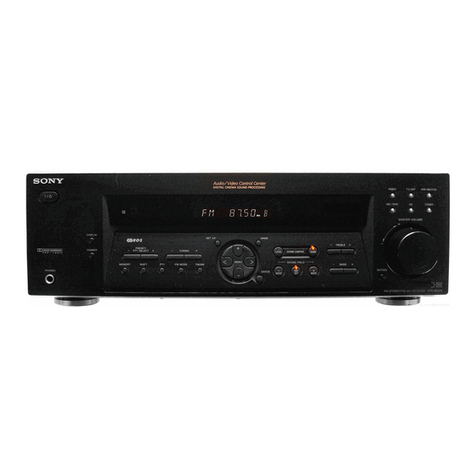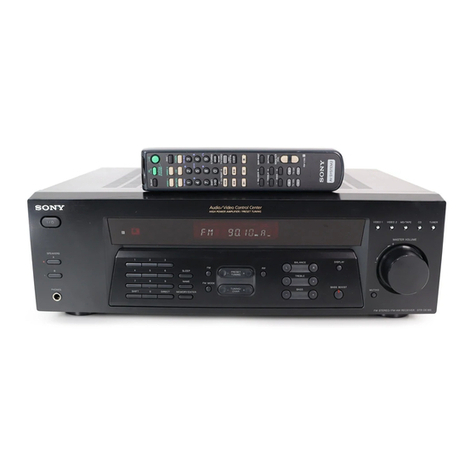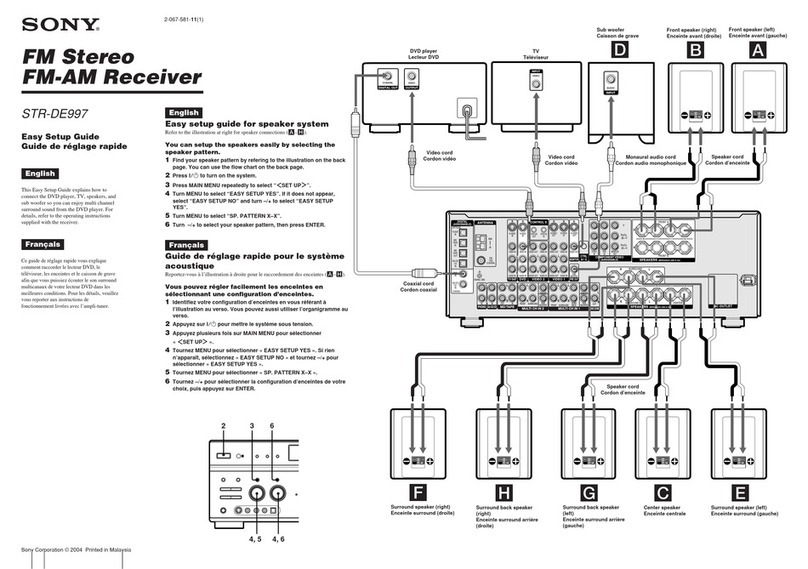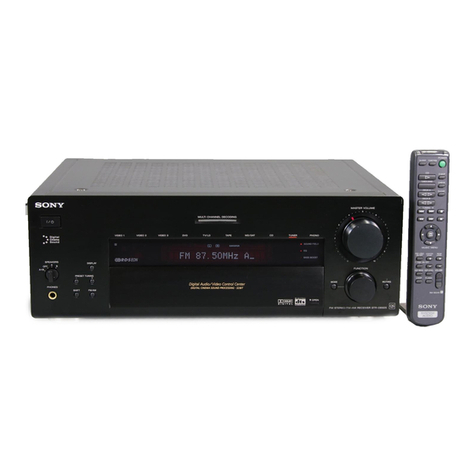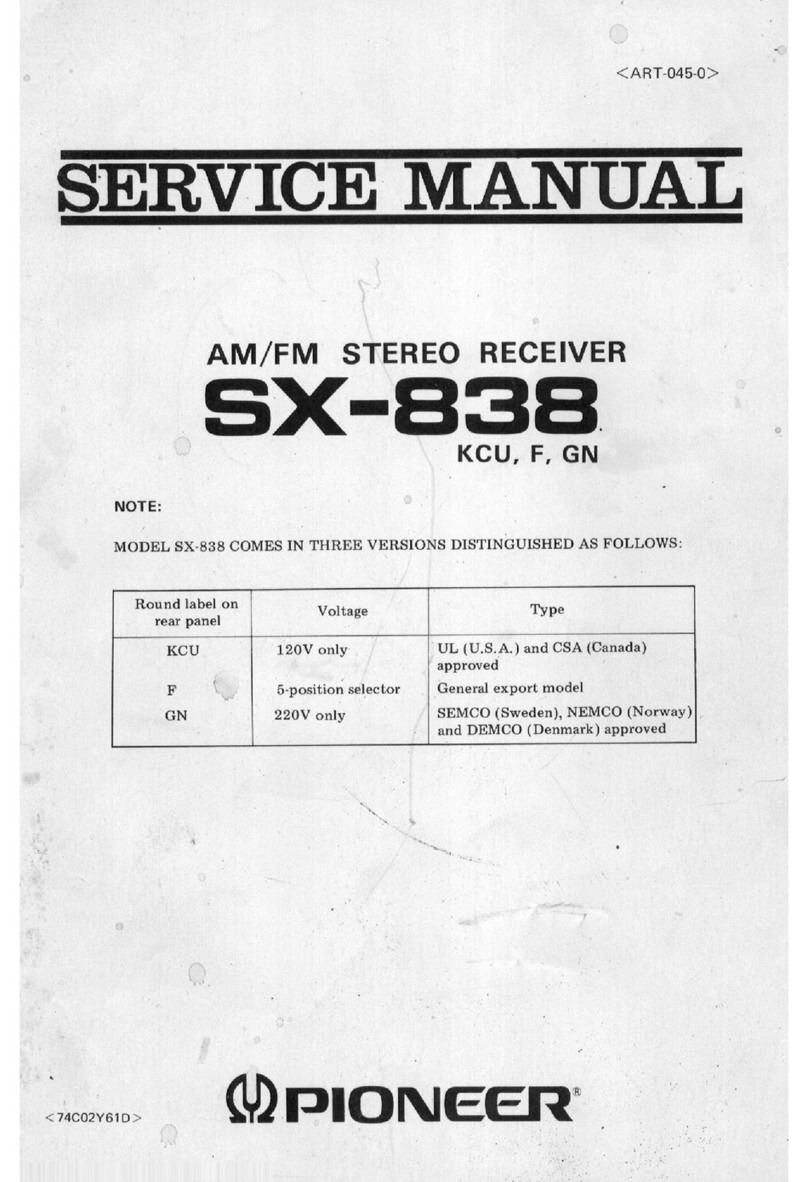
STR-DH500
8
a) The number 5, MASTER VOL +, TV VOL +, and
buttons have tactile dots. Use the tactile dots
as references when operating the receiver.
b)This button is also available for DIGITAL
MEDIA PORT adapter operation. For details on
the function of the button, refer to the operating
instructions supplied with the DIGITAL MEDIA
PORT adapter.
Notes
• Some functions explained in this section may not
work depending on the model.
• The above explanation is intended to serve as an
example only. Therefore, depending on the
component, the above operation may not be
possible or may operate differently than described.
Name Function
TNumeric
buttons
(number 5a))
Press to
– preset/tune to preset
stations.
– select track numbers of the
CD player, DVD player or
Blu-ray disc player. Press
0/10 to select track number
10.
– select channel numbers of
the VCR or satellite tuner.
Press the numeric buttons and
TV (M) at the same time to
select the TV channels.
UTV INPUT Press TV INPUT and TV (M)
at the same time to select the
input signal (TV input or
video input).
SLEEP Press to activate the Sleep
Timer function and the
duration which the receiver
turns off automatically.
11US
Name Function
ATV ?/1
(on/standby)
Press TV ?/1and TV (M) at
the same time to turn the TV
on or off.
AV ?/1
(on/standby)
Press to turn on or off the
Sony audio/video components
that the remote is assigned to
operate (page 53).
If you press ?/1(B) at the
same time, it will turn off the
receiver and other Sony
components (SYSTEM
STANDBY).
Note
The function of the AV ?/1
switch changes automatically
each time you press the input
buttons (C).
B?/1
(on/standby)
Press to turn the receiver on or
off.
To turn off all Sony
components, press ?/1and
AV ?/1(A) at the same time
(SYSTEM STANDBY).
CInput buttons Press one of the buttons to
select the component you
want to use. When you press
any of the input buttons, the
receiver turns on. The buttons
are factory assigned to control
Sony components.
You can change the button
assignments following the
steps in “Changing button
assignments” on page 53.
D2CH Press to select a sound field.
A.F.D.
MOVIE
MUSIC
EDVD/BD
MENU
Press to display the menu of
the DVD or Blu-ray disc on
the TV screen. Then, use V,v,
B,band (P) to perform
menu operations.
FD.SKIP Press to skip a disc when
using a multi-disc changer.
GD.TUNING Press to enter direct tuning
mode.
Name Function
HAMP MENU Press to display the menu of
the receiver. Then, use V,v,
B,band (P) to perform
menu operations.
IMEMORY Press to store a station.
ENTER Press to enter the value after
selecting a channel, disc or
track using the numeric
buttons of the TV, VCR or
satellite tuner.
JMUTING Press to turn off the sound
temporarily.
Press MUTING again to
restore the sound.
Press MUTING and TV (M)
at the same time to activate
the TV’s muting function.
KTV VOL
+a)/–
Press TV VOL +/– and TV
(M) at the same time to adjust
the volume level of the TV.
MASTER
VOL +a)/–
Press to adjust the volume
level of all speakers at the
same time.
L./>b) Press to skip a track of the CD
player, DVD player or Blu-
ray disc player.
REPLAY /
ADVANCE
Press to replay the previous
scene or fast forward the
current scene of the VCR,
DVD player or Blu-ray disc
player.
m/Mb) Press to
– search tracks in the forward/
reverse direction of the
DVD player.
– start fast forward/rewind of
the VCR, CD player or Blu-
ray disc player.
a)b) Press to start playback of the
VCR, CD player, DVD player
or Blu-ray disc player.
Xb) Press to pause playback or
recording of the VCR, CD
player, DVD player or Blu-
ray disc player. (Also starts
recording with components in
recording standby.)
<
<
continued
12US
Name Function
xb) Press to stop playback of the
VCR, CD player, DVD player
or Blu-ray disc player.
FM MODE Press to select the FM
monaural or stereo reception.
TV CH +/– Press TV CH +/– and TV (M)
at the same time to select
preset TV channels.
PRESET +/– Press to select
– preset stations.
– preset channels of the VCR
or satellite tuner.
TUNING +/– Press to scan a station.
MTV Press TV and the button with
orange printing at the same
time to enable TV operation.
NMENU/HOME Press to display the menu of
the VCR, DVD player,
satellite tuner or Blu-ray disc
player on the TV screen.
Press MENU/HOME and TV
(M) at the same time to
display the TV’s menu.
Then, use V,v,B,band
(P) to perform menu
operations.
ORETURN/
EXIT
Press to
– return to the previous menu.
– exit the menu while the
menu or on-screen guide of
the VCR, DVD player,
satellite tuner or Blu-ray disc
player is displayed on the
TV screen.
Press RETURN/EXIT and
TV (M) at the same time to
return to the previous menu or
exit the TV’s menu while the
menu is displayed on the TV
screen.
Name Function
P
V/v/B/b
After pressing DVD/BD
MENU (E), AMP MENU
(H) or MENU/HOME (N),
press V,v,Bor bto select the
settings. Then, press to
enter the selection if you have
pressed DVD/BD MENU or
MENU/HOME previously.
Press also to enter the
selection of the receiver,
VCR, satellite tuner, CD
player, DVD player or Blu-
ray disc player.
QDISPLAY Press to select information
displayed on the TV screen of
the VCR, satellite tuner, CD
player, DVD player or Blu-
ray disc player.
Press DISPLAY and TV (M)
at the same time to display
TV’s information on the TV
screen.
RTOOLS/
OPTIONS
Press to display and select the
options of the DVD player or
Blu-ray disc player.
Press TOOLS/OPTIONS and
TV (M) at the same time to
display options applicable to
the Sony TV.
S-/-- Press to select the channel
entry mode, either one or two
digit of the VCR.
Press -/-- and TV (M) at the
same time to select the
channel entry mode, either
one or two digits of the TV.
>10/xPress to select
– track numbers over 10 of the
VCR, satellite tuner or CD
player.
– channel numbers of the
Digital CATV terminal.
CLEAR Press to clear a mistake when
you press the incorrect
numeric button.
,


